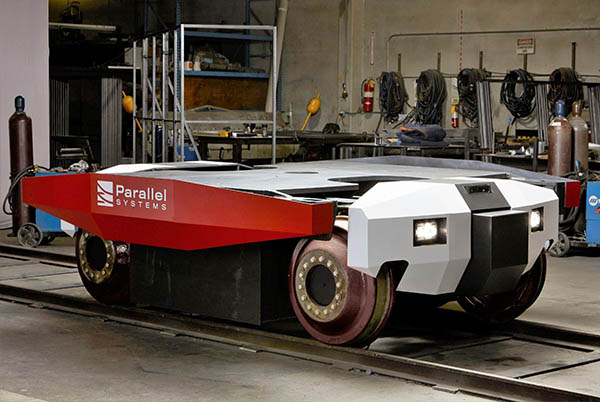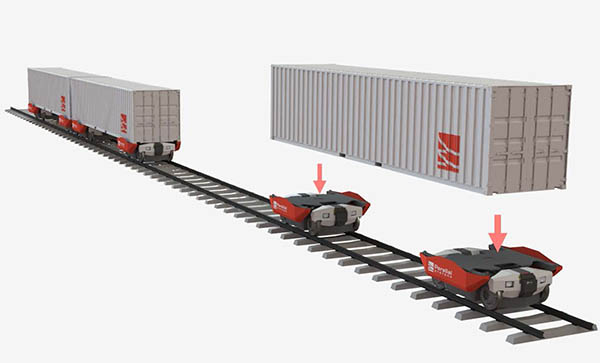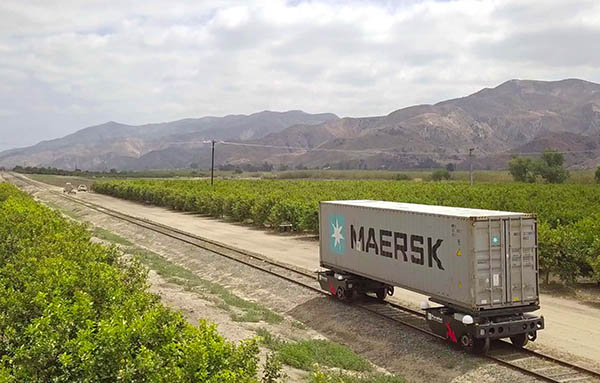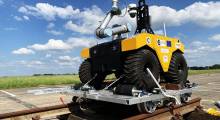Much of North America's freight travels by tractor-trailer truck on highways, but the addition of autonomy, modularity, and electrification to locomotives could give the older transportation mode new life. Parallel Systems last week came out of stealth and announced that it has raised $49.55 million in its Series A round. The Culver City, Calif.-based startup said it plans to use the funding to build a fleet of rail vehicles, conduct testing, and grow its team.
“We founded Parallel to allow railroads to open new markets, increase infrastructure utilization, and improve service to accelerate freight decarbonization,” stated Matt Soule, co-founder and CEO of Parallel Systems. “Our business model is to give railroads the tools to convert some of the $700 billion U.S. trucking industry to rail.”
“The Parallel system can also help alleviate the supply chain crisis by enabling low-cost and regular movement of freight in and out of ports, he added. “Parallel’s competitive edge is our autonomous battery-electric rail vehicles, which are designed to move freight cleaner, faster, safer, and more cost effectively than traditional trains or trucks.”
SpaceX alumni found Parallel Systems
Three former SpaceX engineers founded Parallel Systems in January 2020. Soule was previously head of avionics at SpaceX, where he led 300 people in the design and testing of space electronics.
John Howard, vice president of hardware, was previously head of batteries at SpaceX, where he introduced lithium-ion to human spaceflight. Ben Stabler, vice president of software, was previously head of avionics software and lead engineer for motorized actuator electronics at SpaceX.
Parallel Systems' staff includes about 25 engineers from Google, Tesla, Uber, SpaceX, and more.
Startup promises more flexible freight
Although the U.S. has the world’s most expansive railroad system, with over 140,000 miles of track, less than 3% of that network is occupied by active trains at any given moment, estimated Parallel Systems. To make freight deliveries economical, today’s railroads typically focus on moving shipping containers more than 500 miles.
Parallel said it has identified an opportunity to bring more business to rail by improving the unit economics over shorter distances. A more flexible system would alleviate pressure on highway infrastructure and the trucking industry as it faces increasing demand and a shortfall of 80,000 U.S. drivers.
The company said its autonomy system would enable trains to compete more directly with the flexibility of trucking. Today, trucks move most of the nation’s freight. Transferring a portion of that volume to autonomous battery-electric rail could alleviate highway congestion, improve road safety, reduce road wear and tear, provide shippers with more cost-effective transportation, and reduce greenhouse gas (GHG) emissions, claimed Parallel Systems.

Platooning rail vehicles rather than trains
Parallel Systems said its patent-pending vehicle architecture combines innovative software and hardware to break up traditional freight trains, which are often many cars and miles long.
The company’s autonomous battery-electric rail vehicles can load and transport standard shipping containers as a single or double-stacked load. A double load would have a payload capacity of up to 128,000 lb. (58,000 kg.).
The railcars, which are individually powered, can join together to form “platoons” or split off to multiple destinations while en route, said Parallel. The closed network of a railroad “is ideal for the safe and early commercialization of autonomous technology, due to limited track access and centralized traffic control,” it claimed.
Parallel said its flexible platoons do not need to accumulate large quantities of freight to make service economical, allowing for more responsive service and a wider range of routes than conventional trains. This can reduce waiting and loading times and support service at a range of distances, from across a city to across the country.
The company added that its system can bypass congested switching yards, which are historically used to manually sort and reassemble freight onto secondary trains. This could safe hours or even days of time, improve asset utilization, and raise the quality of service, it said. Parallel is designing its vehicles to charge in less than an hour for a 500 mi. (800 km) range, using 25% of the energy of a semi-truck.
Parallel promises sustainability and safety
Parallel Systems said its transportation system is lighter and more aerodynamic than freight trains. Its platoon technology features self-propelled rail cars that push against one another to distribute the aerodynamic load. Parallel said its vehicles use just 25% of the energy compared with a semi-truck and offer the lowest operational cost of any surface freight transportation mode.
The company claimed that its electric, zero-emission vehicles could dramatically reduce the freight industry’s carbon emissions. Trucking accounts for 444 million metric tons of carbon dioxide, or approximately 7% of all CO2-equivalent GHG emissions in the U.S., according to 2019 U.S. Environmental Protection Agency figures.
In addition, Parallel said its vehicles are able to rapidly detect hazards, such as a vehicle on the track. The railcars, which use a camera-based perception system and redundant braking, can autonomously stop up to 10 times quicker than a train, according to the company. This means the vehicles can perform an emergency stop within the line of sight that the sensors perceive an object.
In addition, the platoons automatically maintain safe speeds based on the track conditions, said Parallel. Platoons could reduce waiting times at railroad crossings. Since the platoons are shorter than traditional trains, the vehicles could separate to allow traffic, emergency vehicles, or the public to safely proceed, the company said.

Terminal reductions
Another potential benefit of Parallel Systems' proprietary architecture is that it could allow for smaller, cleaner, and less expensive terminals that can be built closer to shippers and customers, reducing last-mile delivery costs. Today, traditional rail terminals have to be large enough to service long trains and are each built on hundreds of acres of land.
Parallel added that it could enable the following benefits:
- Micro terminals: Low capital expenditure, zero-emissions terminals that require less than 5% of the land compared with a traditional terminal
- Direct to seaport: Could enable loading and unloading containers directly from port crane onto rail, address supply chain congestion in seaports by eliminating the need for storage within the port complex, reduce yard truck usage, and create a shuttle system to inland ports and terminals
- Direct to warehouse: Would connect rail to adjacent factories and warehouses and brings containers directly to the facility, eliminating transportation mode changes and short-distance truck delivery costs; could also increase weight capacity, as rail can sustain more tonnage than trucks
In addition, Parallel said it is developing software to allow its vehicles and platoons to integrate with existing rail operations so all freight trains and transit interoperates. Its fully-automated connected system uses machine learning to optimize vehicle routing, traffic scheduling, and energy consumption.
Funding and testing
Anthos Capital led Parallel Systems' Series A round, with participation from Congruent Ventures, Riot Ventures, Embark Ventures, and others.
Parallel Systems said it has raised $53.15 million to date, including $3.6 million in seed funds. The company is currently testing its autonomous battery-electric rail vehicles on a closed track in the Los Angeles area.
Article topics
Email Sign Up

















